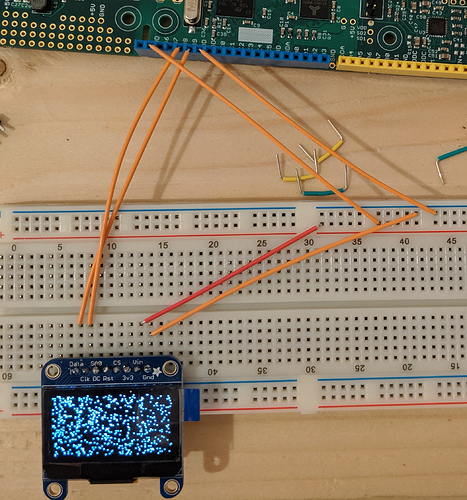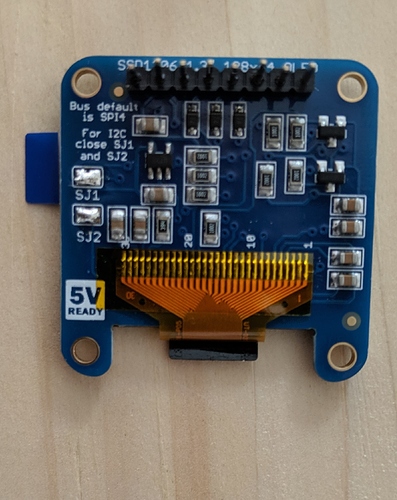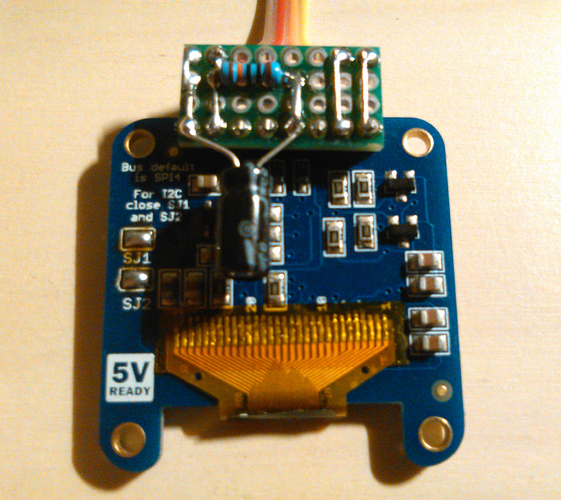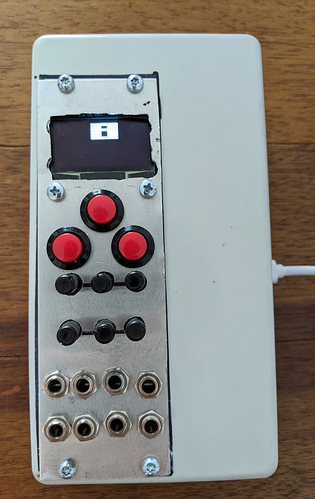Hi, i'm back form a short vacation
The 0x78/0x7a are actually the same addresses as 0x3c/0x3d (there is an implicit 0 low bit 0x78 <-> 0x3c).
The OLED thread is low priority compared to audio (flickers on the OLED are OK, clicks on the audio are not OK).
In my experience two OLEDs work well. But when a patch is heavy on the CPU, it will start to flicker: my code is aimed to scopes and tries to have a permanent refresh.
I did not experimented with these multiplexers yet. They would need some more coding.
If the goal is to display parameters, the refresh could be "on demand"... that would be a new - and optimized for that purpose - design.
But I think that the best solution for more advanced designs is to use an arduino due or a teensy so that you can use the extensive set of drivers and color displays and communicate with the axoloti by midi or uart.







